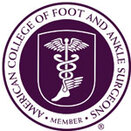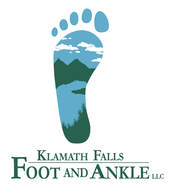|
As COVID-19 appears to be building momentum worldwide, America’s podiatrists say they’re treating some of the sickest patients of their careers—but those patients are not suffering from the coronavirus. Instead, they’re patients with diabetes who have delayed care due to fear of the virus. As a result, they are suffering serious complications, ranging from severe diabetic foot wounds to gangrene to sepsis. “People with diabetes are at high risk from COVID-19,” said Jeff Merrill, DPM, of Klamath Falls Foot and Ankle, LLC. “They should absolutely take appropriate precautions, such as wearing masks in public and avoiding large gatherings. But those precautions do not extend to avoiding regular care for their diabetes.” In fact, Dr. Merrill said, the risks of avoiding diabetes care are much higher than the risk of exposure to the coronavirus in a medical facility. Physicians’ practices are taking extensive precautions to keep patients and providers alike safe during the pandemic. Safeguards include additional PPE, requirements for patients to wear masks, social distancing in waiting areas, temperature checks, pre-appointment questionnaires, disinfection between patients, and more. Virtual appointments may also be available. “I strongly encourage people with diabetes to keep their appointments in order to keep their feet,” said Dr. Merrill. “If a patient with diabetes ignores a wound or an infection, the possibility of amputation is very real. Once a person with diabetes suffers an amputation, the five-year mortality rate is higher than for many cancers.” Dr. Merrill suggests three steps for people with diabetes to maintain control of their diabetes during the COVID-19 pandemic:
1. Stay active. Engage in regular exercise. Don’t be tempted to overindulge in comfort foods. Instead, stick to a sensible diet designed to help control blood sugars. 2. Stay alert. Track blood sugar levels daily and be sure to have regular bloodwork to monitor your A1C (a measure of average blood sugar level over the past couple of months). Be vigilant about daily foot exams. Watch for changes in the color or temperature of the feet and any new injuries. Wear shoes, even around the house, to avoid the risk of injury and infection. 3. Stay in contact by keeping all your regular, preventive health-care appointments. “Keep your appointments with every member of your care team—your primary care doctor, your endocrinologist, your ophthalmologist, and your podiatrist,” Dr. Merrill said. “If you notice a change in your feet or sustain an injury, you should contact your podiatrist immediately. Never try to treat a problem at home.” Jeff Merrill, DPM, is a podiatrist at Klamath Falls Foot and Ankle, LLC in Klamath Falls, Oregon. Call 541-850-6463 or visit www.kffootandankle.com to make an appointment. Visit www.apma.org/diabetes to learn more about foot health and diabetes. From bunions to broken toes, local foot and ankle surgeon has heard it all “Don’t cross your eyes, they’ll stay that way!” Old wives’ tales and myths like that example are fun to laugh at. We believed them as children. “Step on a crack and you’ll break your mother’s back.” But there are other myths that are no laughing matter, especially when they involve your health. From bunions to broken toes, foot and ankle surgeon Jeff Merrill DPM, FACFAS, has heard it all. Dr. Merrill treats patients in Klamath Falls. He shares five myths about foot care and the realities behind them. Myth: Cutting a notch (a “V”) in a toenail will relieve the pain of ingrown toenails. Reality: When a toenail is ingrown, the nail curves downward and grows into the skin. Cutting a “V” in the toenail does not affect its growth. New nail growth will continue to curve downward. Cutting a “V” may actually cause more problems and is painful in many cases. Myth: My foot or ankle can’t be broken if I can walk on it. Reality: It’s entirely possible to walk on a foot or ankle with a broken bone. “It depends on your threshold for pain, as well as the severity of the injury,” says Dr. Merrill. But it’s not a smart idea. Walking with a broken bone can cause further damage. It is crucial to stay off an injured foot until diagnosis by a foot and ankle surgeon. Until then, apply ice and elevate the foot to reduce pain. Myth: Shoes cause bunions.
Reality: Bunions are most often caused by an inherited faulty mechanical structure of the foot. It is not the bunion itself that is inherited, but certain foot types make a person prone to developing a bunion. While wearing shoes that crowd the toes together can, over time, make bunions more painful, shoes themselves do not cause bunions. Although some treatments can ease the pain of bunions, only surgery can correct the deformity. Myth: A doctor can’t fix a broken toe. Reality: Nineteen of the 26 bones in the foot are toe bones. “What I tell patients is, there are things we can do to make a broken toe heal better and prevent problems later on, like arthritis or toe deformities,” Dr. Merrill says. Broken toes that aren’t treated correctly can also make walking and wearing shoes difficult. A foot and ankle surgeon will x-ray the toe to learn more about the fracture. If the broken toe is out of alignment, the surgeon may have to insert a pin, screw or plate to reposition the bone. Myth: Corns have roots. Reality: A corn is a small build-up of skin caused by friction. Dr. Merrill says many corns result from a hammertoe deformity, where the toe knuckle rubs against the shoe. The only way to eliminate these corns is to surgically correct the hammertoe condition. Unlike a callus, a corn has a central core of hard material. But corns do not have roots. Attempting to cut off a corn or applying medicated corn pads can lead to serious infection or even amputation. A foot and ankle surgeon can safely evaluate and treat corns and the conditions contributing to them. To make an appointment with Dr. Merrill, contact his office at 541-850-6463 or visit his Web site at www.klamathfallsfootandankle.com. For additional foot care myths, visit the American College of Foot and Ankle Surgeons’ consumer Web site, FootHealthFacts.org. Bring your sore toes to Klamath Falls Foot & Ankle, LLC Ingrown nails are essentially a battle for real estate on your toe. The nail fold, or skin adjacent to your nail, and the actual nail itself want to occupy the same location. The fight for this area is sometimes exacerbated when we cut our nails and leave a jagged edge in the corner of the nail. Oftentimes we are able to relieve the symptoms by cutting the jagged edge of the corner of the nail to relieve pain. However, when a person develops an ingrown nail multiple times, the first questions to ask are, "Am I cutting the nail properly?" and "Do I allow the edge of the nail to grow out past the nail fold, or do I cut the nail deep into the corner?" The second thought to consider is, "Perhaps I should have the painful portion of the nail removed permanently so the ingrown nail never causes pain again." With the use of a chemical to eradicate the root of the nail, there is almost no chance that the painful border will ever grow back. The procedure takes about 30 minutes and is done in our office. If you happen to suffer from recurrent ingrown toenails, we look forward to serving you and freeing you from this pesky, painful problem!
-Jeff Merrill, DPM, FACFAS |
AuthorKlamath Falls Foot and Ankle, LLC Staff Categories
All
Archives
October 2022
|
|
Klamath Falls Foot and Ankle, LLC
Jeff Merrill, DPM, FACFAS 531 S. 6th St. Klamath Falls, OR 97601 Appointments: 541-850-6463 Billing: 888-719-3491 Fax: 541-850-5990 Request Appointment Online |
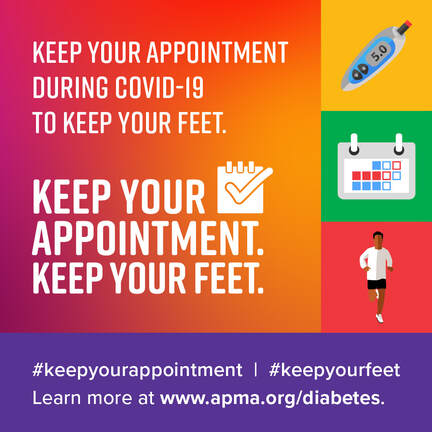

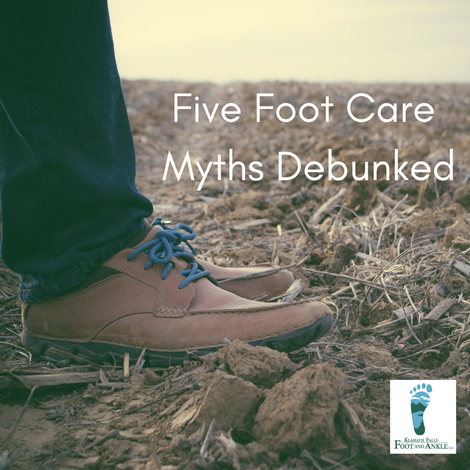
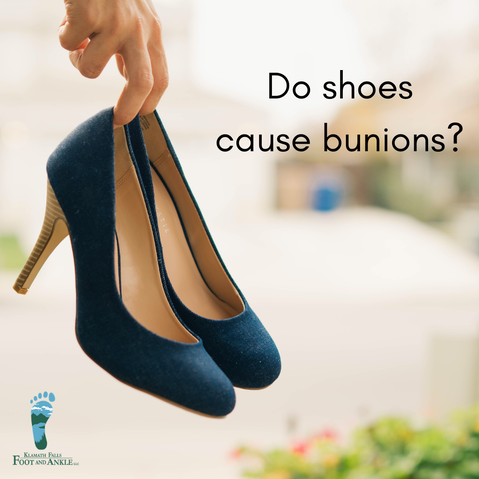
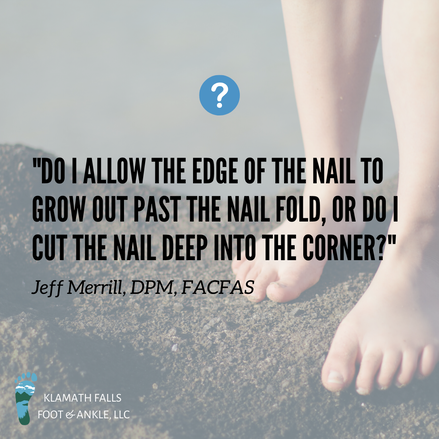
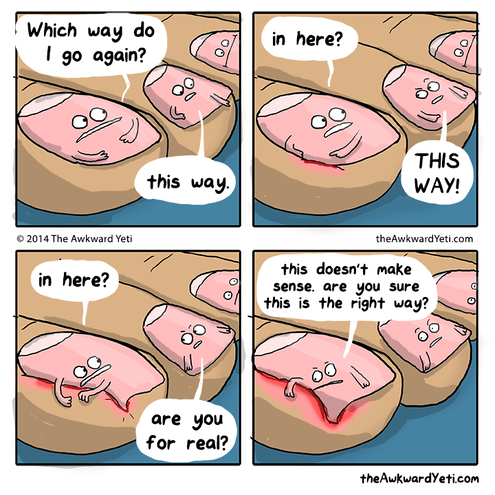
 RSS Feed
RSS Feed
